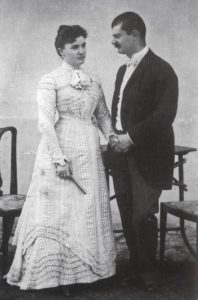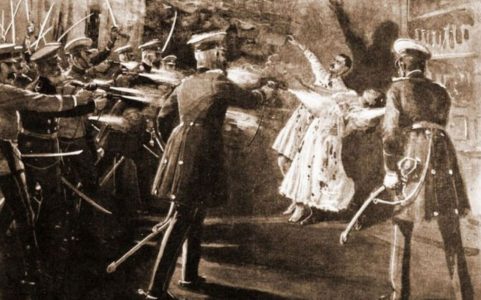Joseph Trouveroy, the former ambassador of the Kingdom of Belgium to Serbia wrote an interesting article on the history of Serbia and Yugoslavia, from which we took a segment that describes the dramatic events from the May coup in 1903.
The building that now houses the Belgian embassy in Belgrade, located some 300 metres from the former royal palace, witnessed a part of the drama that caused bloodshed in the Serbian capital in 1903. Opposition parties, mostly made up of soldiers and citizens, criticized Aleksandar Obrenović I for his authoritarian policies, while he, like his father Milan, was despised by the Orthodox clergy. Aleksandar was a bachelor, and one day, fell madly in love with Draga – the daughter of a pig farmer called Mašin (the author did an omission here as Draga’s father was called Panta Lunjevica).

Draga, who was in the process of divorcing her first husband, allowed the king to court her on her father’s farm, to the astonishment of the inhabitants of a large village that was Belgrade then. In order to protect his private life, in 1898, the king ordered that a beautiful one-of-a-kind building in Belgrade, decorated in the Italian style, should be built on the corner of Krunska Street, which in 1945, was renamed Proleterskih Brigada Street. At the same time when the house was finished, Draga Mašin was crowned the queen of Serbia and moved her sister’s family into the house. After the end of the First World War, the house was bought by Belgium.
The queen’s brothers, the heirs to the throne, who fled to their other sister’s place, fought against the insurgents in a small garden in Krunska Street, leaning against a plum tree
Draga, who was prone to intrigues and was widely detested, wanted to secure wealth for herself by giving the Obrenović family an heir. As she was unable to produce an heir, she tried to pass her sister’s newborn baby as her own. This hoax caused an uproar among the people. In the end, she managed to persuade the king to take her two brothers, who were officers, as the heirs to the throne. From that day on, the destiny of the Obrenović dynasty was sealed.

One night in May 1903, a group of officers stormed the palace. They found the king and queen hiding behind the draperies in their room, killed them on the spot, threw the king’s body out the window, and shamelessly butchered the queen, proudly carrying parts of her body on their sabres.
The queen’s brothers, the heirs to the throne, who fled to their other sister’s place, fought against the insurgents in a small garden in Krunska Street, leaning against a plum tree. After they were captured, they were taken to the bank of the Sava River, where they were beheaded, and their bodies were thrown into the river. European courts and entire Europe were appalled by the way the rulers were treated.
This historic plum tree in our embassy’s garden, although very old, still bore great fruit from 1978 to 1981, perfect for making plum brandy. Local hoodlums regularly stole the plums from the garden by jumping over the wall. In the end, the tree was knocked down by a storm.
Perhaps all of the above can shed light on the unpleasant events that this friendly country is currently experiencing and with which Belgium has always maintained great relations, from 1914 to 1918 and 1941 to 1945, until today.
Diplomacy&Commerce was given this article courtesy of H.E. Adam Koenraad, the Ambassador of the Kingdom of Belgium to Serbia